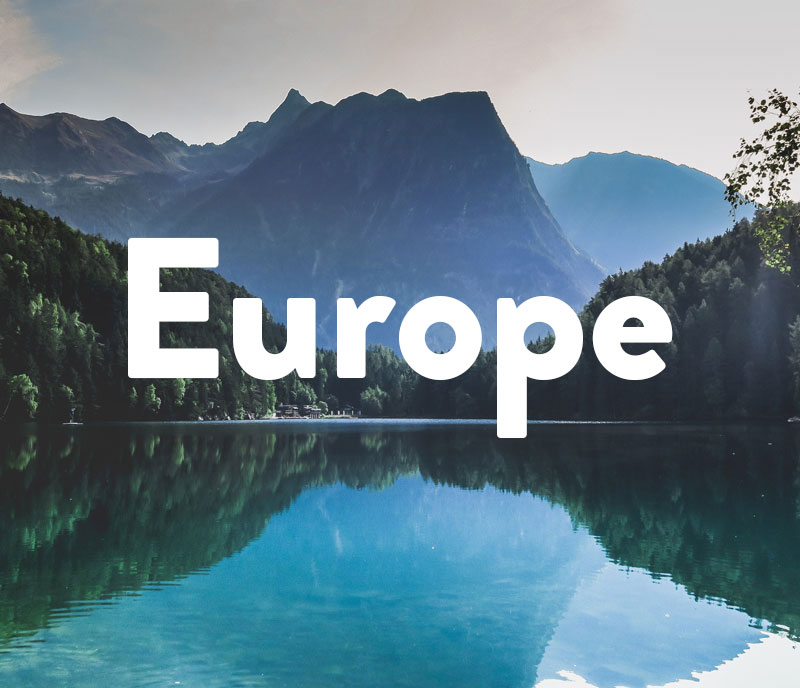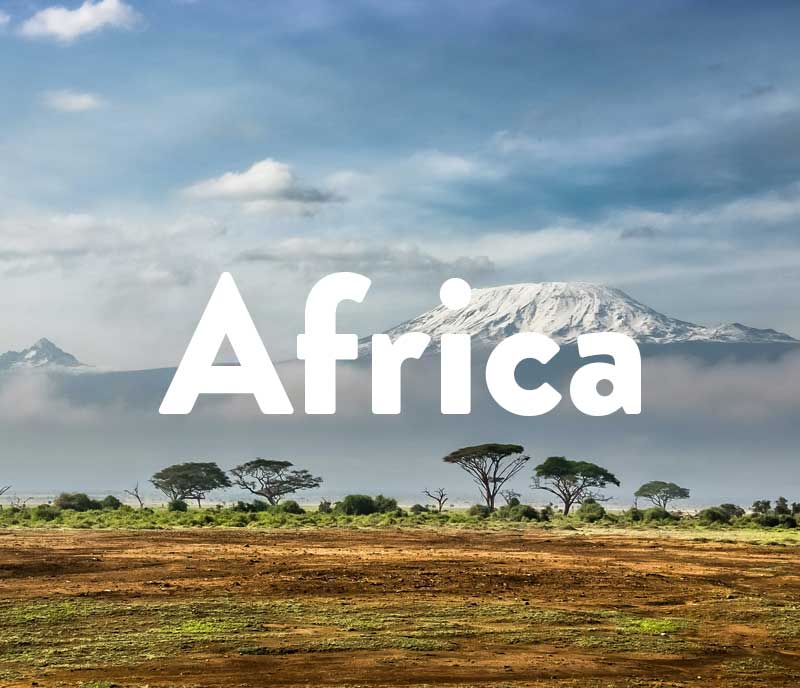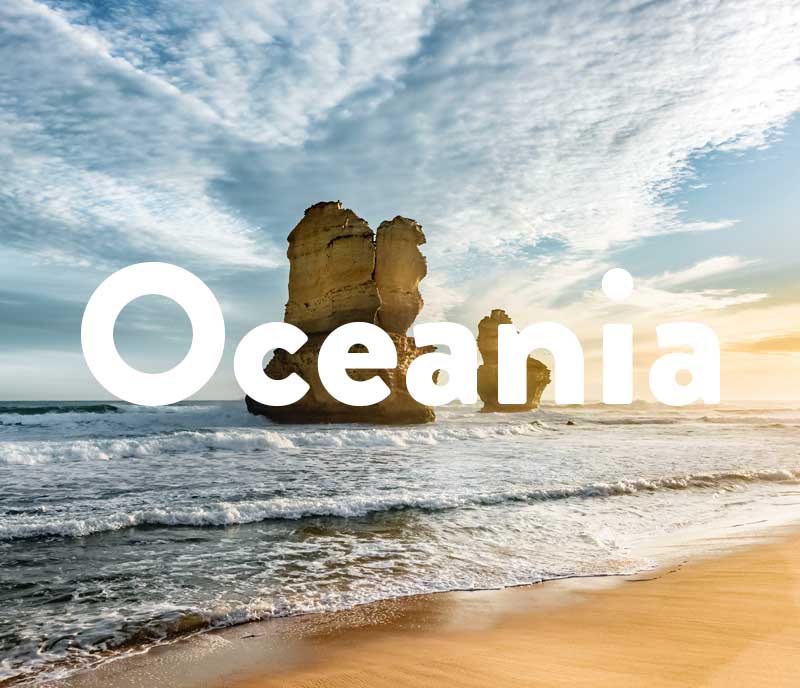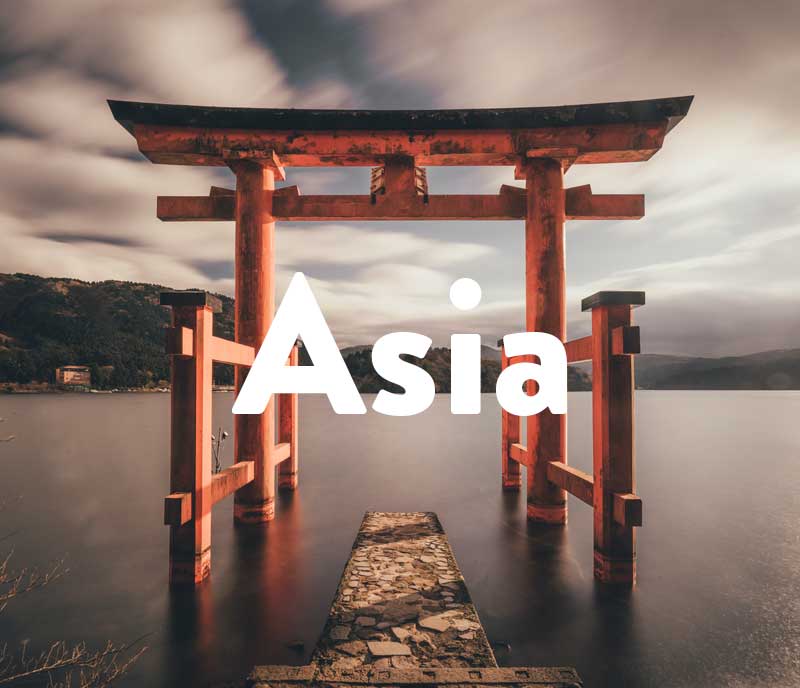A multicultural fusion of European, African and Indian influences create the dynamic country of modern South Africa. This diverse forward-thinking country is bursting with dramatic landscapes, natural beauty and rich heritage.
Dive into our (free) travel guides below!
.
.
.
.
.
.
.
.
The Key Info
Extending across Africa’s southern tip means picturesque coastal resorts lie on both the Indian and Atlantic Oceans. You’ll find pristine beaches and water sports galore along with quirky cuisine and outdoor artwork. Further north, mountainous woodlands and dramatic canyons offer jaw-dropping walks for the intrepid. Then of course, Africa’s famous subtropical savanna. With some of the best safari destinations on the continent, a trip through the African wilderness is an experience you will remember forever.
The ninth largest country in Africa has borders with 6 countries including Botswana, Mozambique, Namibia, Swaziland, Zimbabwe and Lesotho, which is an enclave in the heart of the country. South Africa is one of only 12 countries to have more than one capital city. The three capitals of Pretoria, Cape Town and Bloemfontein stem from British colonial rule pre-1910. Now, all three offer vibrant attractions, dining and nightlife, blending their European influences with African style.
Country in Numbers
- Population number: 58,558,270
- Total size of the country: 1,219,912 km²
- Capital cities: Pretoria (executive capital), Cape Town (legislative capital), Bloemfontein (judicial capital)
- Currency: South African Rand (ZAR)
- Main Language: English
- Religion: Christian 84.2%, Ancestral/Tribal or other African religions 5.0%, Muslim 2.0%, Hindu 1.0%, Other 7.8%
The Largest Cities in South Africa
1. Johannesburg – Population 9,399,000
The financial metropolis of South Africa has suffered from a bad reputation in the past. Though in recent years, a vibrant new beginning has emerged for the beating heart of this country. Defunct warehouses are now occupied with contemporary art galleries and stylish entertainment venues. These are joined by trendy cafes and restaurants in the city’s urban creative hub. Though Johannesburg’s heritage and difficult history has not been left behind. The buildings of Constitution Hill reveal the country’s road to democracy. A tour around the site will take in the Old Fort that defended the city from invasion and the prison block that once imprisoned both Mahatma Gandhi and Nelson Mandela.
2. Cape Town – Population 3,660,000
A trip to South Africa must contain a visit to this diverse combination of cultures, landscapes and cuisine. The iconic Table Mountain provides a dramatic backdrop to some of the country’s best restaurants mixed in with world-class shopping and museums. The historic V&A Waterfront continues this theme with the addition of an aquarium, observation wheel and boat tours to keep you entertained. Further along the coast, escape from the bustling center with a visit to tranquil sandy beaches and rocky headlands. You may have a few hundred penguins for company too at Boulders Beach!
3. Durban – Population 2,901,000
The popular coastal resort of Durban has an unmistakable Asian feel to it due to its large Indian population. The eastern coast also revels in the warmer Indian Ocean, rather than Cape Town’s unpredictable Atlantic seafront. Golden sand stretches the length of the promenade dotted with public pools, hotels and attractions. Known as the Golden mile, this 4.5km coast ends with the uShaka Marine World theme park at Durban Harbour. This huge complex is home to a waterpark, scuba diving activities, plus the fifth largest aquarium in the world.
4. Pretoria – Population 2,059,000
The executive capital often gets left behind by tourists in favor of the nearby Johannesburg. However, the two cities are very different in feel, even though they are just 50km apart. The more conservative Pretoria is home to the Union Buildings (headquarters of the government) surrounded by statues of former presidents. One of them is the 9-meter tall statue of Nelson Mandela standing proudly in the gardens.
Historic architecture adorns the rest of the city’s streets, such as the art deco Voortrekker Monument. Visit in October for the magical sight of Jacaranda tree’s purple blossom in full bloom.
5. Port Elizabeth – Population 1,179,000
Approximately halfway between Cape Town and Durban lies the lesser-known, but no less impressive, Port Elizabeth. The popular stopover location has a vast selection of watersports available on the clear waters of Algoa Bay. If you’d prefer to stay on dry land, a variety of art and heritage trails will take you past the city’s many sculptures and memorials. Port Elizabeth is not short of wildlife either. The bay is a haven for whale and dolphin spotting. While the nearby Addo Elephant National Park has grown from a small Elephant reserve to one of South Africa’s largest conservation parks.
Top Tourist Attractions
1. Kruger National Park
A visit to South Africa would not be complete without the authentic African safari experience. Kruger National Park contains an unrivalled amount of wildlife and stunning scenery in one of the largest game reserves on the continent. To really enjoy the park to its fullest, you can stay at an overnight range choosing from options like luxury lodges or country hotels.
2. Table Mountain
This iconic flat-top mountain towers above Cape Town’s vibrant center on the south-west coast. The city’s popular cable car will take you to a stunning viewing point in minutes. You may prefer to follow one of the many hiking trails for a more rewarding trip. Either way, you will be delighted with unobstructed views of the dramatic coastline and the city below. The impressive harbor, City Bowl district and unspoiled Table Mountain National Park are just some of the sights that await.
Kirstenbosch National Botanical Garden
The Kirstenbosch National Botanical Garden on the eastern slopes of Table Mountain is often regarded as one of the most beautiful in the world. Unique indigenous flora is joined by over 7,000 South African plant species in the 5km² of landscaped gardens. Brave the treetop walkway winding its way through the forest or immerse your senses in the fragrance gardens.
Boulders Beach
As the name suggests, enormous granite boulders separate this area of white sand – creating the perfect home to an African penguin colony. The boardwalks let you get up close to these waddling birds, but don’t touch them as their beaks can cause serious damage! The beach is also an ideal location to explore the rock pools, take a family swim, or stop for a picnic.
Blyde River Canyon Nature Reserve
The natural wonder of Blyde River Canyon is one of South Africa’s most visited attractions. When you see the sheer drops and admire the magnificent waterfalls, you will understand why. With miles of winding valley trails to trek, backpackers can immerse themselves in these unworldly rock formations while spotting rare bird and plant species. Or to get the adrenaline pumping try white-water rafting. Take in the picturesque green landscapes and plunging waterfalls as you follow an alpine-style course down the thunderous Sabie River.
Best time to travel
There isn’t a bad time to visit South Africa as every season offers something unique.
The summer months (December to February) have long hot days filled with non-stop sun. However, prepare for expensive accommodation and packed beaches.
Or save some cash and visit in the shoulder seasons (March to May and September to November). There is still plenty of warm dry weather around. Also, some of the country’s biggest festivals are held during these months. South Africa’s hugely popular music festival, Rockin’ the Daises, kicks off spring in style every October.
The winter months from May to September may have cooler temperatures, but nothing a few extra layers won’t solve. Even though this period is considered a low tourism season, it is the best time to see wildlife. Take advantage of the low prices and go on a safari in some of the best game-viewing conditions of the year. This is also the ideal time for whale watching with the annual Hermanus Whale festival taking place in late September.
Safety for travelers in South Africa
South Africa does have a bad reputation for crime, however, the majority of visits to the country are trouble-free. Most violent crime happens between gangs and in places where tourists usually don’t visit. Tourists are often the targets of petty crime, but this is the same as in any country. The best thing to do is to take precautions. Try to avoid walking the streets at night, especially if you are alone. Keep valuables close to you or locked away, and be aware of pick-pocketing. By just adding extra precautions like these, you can be sure to have a fantastic trip.
There has been some great progress made in LGBTQ rights with same-sex marriage now being recognized by the government. Cape Town has an impressive gay scene and is now considered as on of the most LGBTQ-friendly destinations in the world. Though discretion is advised when venturing out of the larger cities, where attitudes are more conservative.
Holidays in South Africa
- 1st January: New Year’s Day
- 21st March: Human Rights Day
- March / April (varies every year): Good Friday & Family Day
- 27th April: Freedom Day
- 1st May: Workers Day
- 16th June: Youth Day
- 9th August: National Women’s Day
- 24th September: Heritage Day
- 16th December: Day of Reconciliation
- 25th December: Christmas Day
- 26th December: Day of Goodwill
Visa Requirements
South Africa allows passport holders of 52 countries to enter visa-free for up to 90 days. A further 28 countries can enter visa-free for up to 30 days. Check the full list on the South African visa website to see if your home country is included. For all other countries, check with your local embassy for visa requirements.
Currency
South Africa’s currency is the Rand (ZAR). Prices are usually displayed with the letter R before or after the amount. Each rand compromises of 100 cents and notes are available in these denominations: 10, 20, 50, 100 and 200.
Credit and debit cards are widely accepted, though let your bank know in advance about your travels. This will ensure purchases don’t get flagged up as a suspicious transaction. Small amounts of cash should be carried, especially when visiting the national parks as ATMs are sparse.
Dos and Don’ts in South Africa
| Do | Don’t |
| Visit with a plan: South Africa is a huge country with sights scattered far away from each other. Prepare for long journeys and allow plenty of time to fully explore this vast but beautiful country | Underestimate the wildlife: The monkeys may appear fun, the penguins may seem cute and you might want to get close to the elephants. However, these animals are wild, they can be unpredictable so pay attention to your guide. |
| Be careful when driving: A road trip around the sights is one of the best ways to see the country. However, the roads present many hazards including wildlife, roadside crime and other chaotic drivers. Enjoy the stunning scenery while being aware of your surroundings. | Forget to tip: South Africa has a tipping culture as wages are low. A 10% to 15% tip is the standard in cafes and restaurants. |
| Try traditional South African food: The combination of African, Indian and European cuisines creates dishes bursting with flavor. A few to add to the list are biltong (cured spiced meat), bobotie (A baked dish made with minced meat and egg) and malva pudding (a sticky caramel flavor sponge). | Be impatient: African time is a thing. The slower pace of life can mean transport is often delayed and service can seem to take forever. This is normal so relax, enjoy your trip and don’t rush. |
Must-Haves for Your Packing List!
- Binoculars: A good pair of binoculars will serve you well on safari. Sometimes the tour guides do have them to borrow but they are often poor quality and shared.
- A flashlight: If spending a few nights out in the bush, you may find yourself having to walk through the darkness back to your lodge. A lightweight flashlight will come in handy.
- Insect repellent: Keep those mosquitoes away. The risk of malaria transmission is higher in the summer months but you should be careful all year round. But you should get a vaccination before going of course.
- Comfortable shoes: Whether you are planning on hiking or not, it is likely you will walk a fair distance. Ensure you bring a comfy pair of suitable shoes to help protect your feet.
- Camera: To bring some of those amazing memories home, invest in a decent camera. One with auto-focus and image stabilization will be helpful in capturing the wildlife on safari too!
- Extra memory cards: There are so many photo opportunities in South Africa that you will probably run out of storage space! A couple of extra memory cards will ensure you capture every moment of your trip.
Secret Tips From Bloggers
Buy your souvenirs from the street markets. The souvenirs at the shopping malls are mass-produced and the prices can be more than double. A lot of the crafts at the street market are handmade and you are helping the locals make a living. – Hayley Martin at TravelSages
If you are planning on visiting a lot of attractions in Cape Town, then the city pass is an excellent option. It includes fast track entry to the popular Table Mountain Cableway and Two Oceans Aquarium so could save you both time and money. Passes are available for 2,3 or 5 days. – On The Luce
You don’t need to worry about buying lots of bottled water as South Africa has some of the cleanest tap water in the world! – The Blonde Abroad
Top 7 Instagrammable Places
- #Tablemountain (1.1million)
- #Krugernationalpark (621k)
- #Bouldersbeach (130k)
- #Kirstenbosch (96k)
- #Blyderivercanyon (43k)
- #Bokaapcapetown (6.5k)
- #Valleyofdesolation (5.7k)
Fun Facts about South Africa
- South Africa’s diverse background means it has 11 official languages: Afrikaans, English, isiNdebele, isiXhosa, isiZulu, Sepedi, Sesotho, Setswana, siSwati, Tshivenda and Xitsonga.
- One of the highest commercial bungee jumps in the world is located in Western Cape. At Bloukrans Bridge, dare devils can leap from this 216 meter-tall bridge into a petrifying plunge towards the Bloukrans River.
- Soweto near Johannesburg contains the only street in the world to have once been the home to two Nobel Peace Prize winners. Both Desmond Tutu and Nelson Mandela once lived on Vilakazi Street.
Want to carry on reading..?
- Winter city breaks 2024 — 10 wonderful destinations around the world
- Holiday at home — plan a relaxing autumn staycation
- Autumn photography — 10 tips for capturing seasonal snapshots
- Tips for your autumn trip — our autumn favourites
- City breaks in autumn 2024 — 8 unforgettable destinations across Europe







